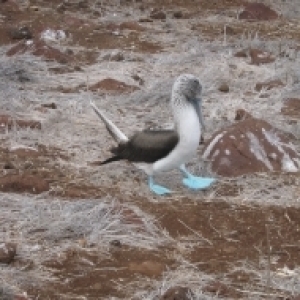village lady
A teeny weeny mouse with a tail three times his size leapt out of my suitcase when I started to pack this morning. I hope he hasn't left a wife and children behind for me to find when I unpack in Bundi tonight. (He didn't!) Yusuf collected me at 8.30 and we set off to the east in his uncle's new car which is much more spacious than last year's. What a difference a day makes. We wouldn't have made it over the mud tracks today for it has rained heavily all night, thunder and lightning too and we are holed up in a small traditional guest house which has four rooms round a central well that goes up 4 stories to a roof top where they dry their clothes under corrugated awnings. The central air conditioning well being open to the elements has allowed the rain to simply pour down to the ground floor drains. The journey here was fascinating for we rejected the toll/national highways and meandered through farmland: small fields of opium poppies, cotton, wheat inter-sown with garlic and onions, sugar cane, mustard, chickpeas, cauliflower... There were small villages and towns, enormous areas for miles and miles in all directions of quarries of red sandstone and long arid plateaus which only green up after the monsoon. I wonder if they will green up after this downpour? Yesterday was a day for Panchayat (local) candidates to travel around canvassing for election. A rather damp and cold marigold mala was thrown into our car as we passed a gathering of turbanned elders while in many places others conferred or just simply sat. Women weren't much to be seen except those carrying wood and performing other household chores. The opium fields of white poppies were often surrounded by wire lines sporting sarees that flapped in the wind to frighten away the wild blue bull and all the fields were marked with a registered number, the produce strictly controlled for domestic pharmaceutical use. When the seed heads are still green they are carefully sliced so that the sap runs and forms callouses that turn russet. This is collected and sold by weight. The seeds are used in cooking. Most excitingly we did see two wild blue bulls (deer family rather than cattle) and a doe with twin calves. The bull is about 16 hands at the shoulder and strong as a horse. We visited a village where they were dying cloth for sarees: huge boiling vats of indigo dye, furiously bubbling vats of molten tar, block printing with boiling tar upon which dust was thrown to dry it quickly. But I couldn't discern which process followed what but one was to boil the printed cloth in indigo dye so that the tar would melt off the cloth and be skimmed from the surface of the water. When cloth had been dyed it was laid out to dry on the ground in the sun. So many processes and the cloth will remain very stiff until it has been washed many times. All the workers had dark blue hands and feet and there were little gatherings of women sitting tying new white cloth with teeny little knots for tie dying. I didn't see one old man in that village – the smoke and pollution probably did for them all.
more

Comments
Sign in or get an account to comment.


